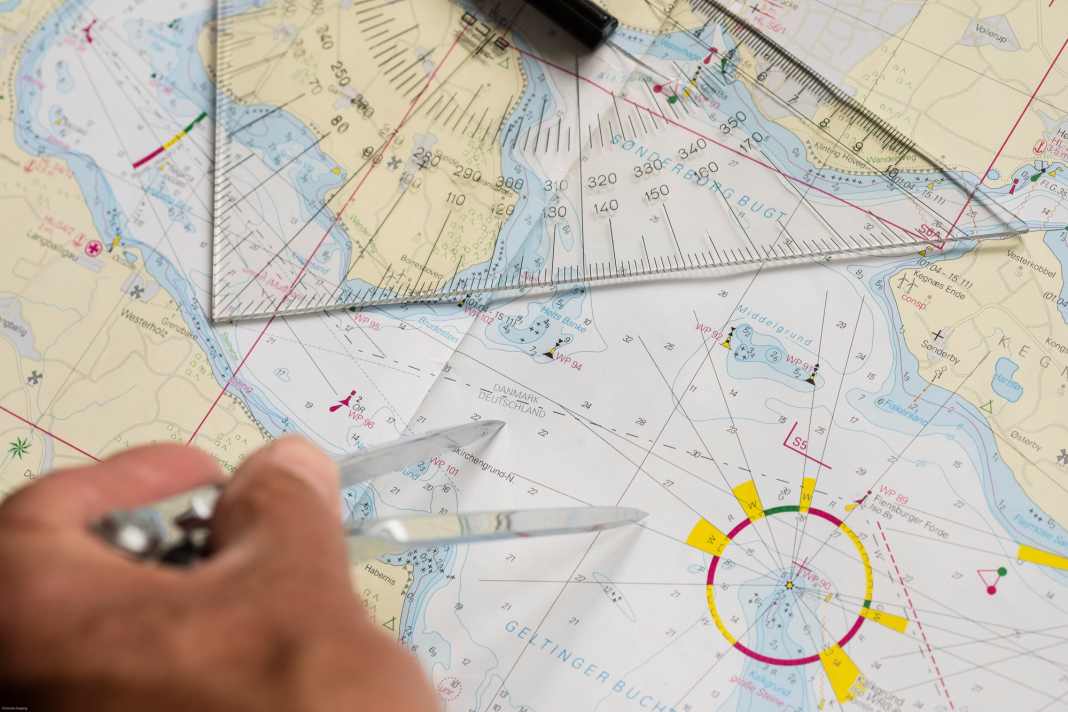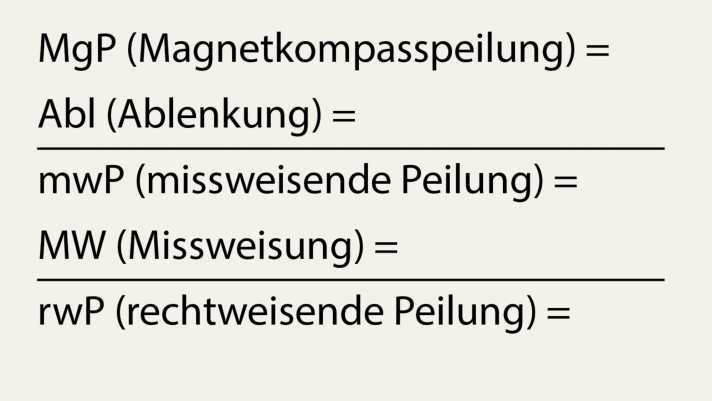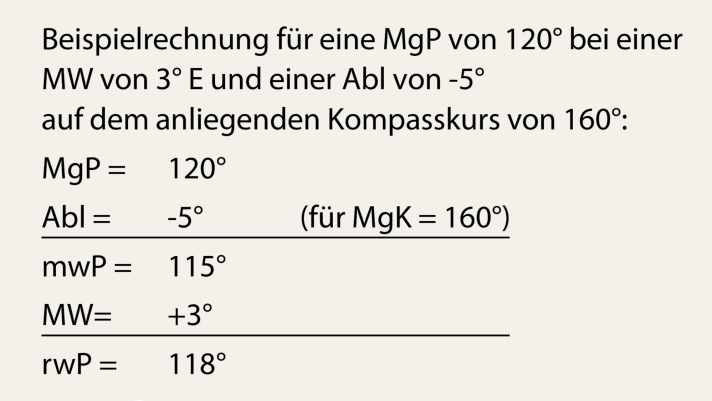





Navigation series
On most yachts today, the current location of the ship is provided by the global navigation satellite system (GNSS) - anytime, anywhere and regardless of weather and visibility. Conventional positioning methods, which were used in the days before GPS & Co. and are still asked about in driving licence exams, are often forgotten in everyday life on board. However, recent fears regarding possible interference with GNSS signals in the vicinity of crisis areas have brought tried and tested terrestrial methods back into favour.
But even in supposedly safe climes, circumstances can occur - such as water ingress or a lightning strike - that render the navigation electronics unusable, meaning that you have to revert to traditional methods. Quite apart from that, it always has a certain appeal to find out where you are by simple means, just like the sailors of old.
Keep an eye out
To determine a location, objects with a known position must be in view. This also applies to satellite navigation, where the GNSS antenna must have a sufficient number of satellites in its field of view. In terrestrial navigation, these objects are earthbound, such as navigation marks and landmarks. They must also be recorded on the nautical chart.
The first thing to do is to look out of the cockpit: what can be recognised in the ship's surroundings and which of the objects discovered can also be found on the nautical chart? Is the prominent church tower on the starboard side actually on the chart? What about the radio mast recognisable further ahead? In order to be able to recognise it without any doubt, you need to have at least a rough idea of where you are - regular docking helps here.
Some nautical charts and sailing guides show drawings or photos of distinctive landmarks as an aid to identification. The appearance of lighthouses is also described in the lighthouse directory. At night, beacons can be clearly identified by their colour, identification and return.
As a general rule, the more orientation points are included in the location determination, the more reliable the result will be. However, there will not always be several suitable objects in view at the same time. Especially as these must be objects with a fixed position. Bins floating in the water are only suitable to a limited extent. Ultimately, however, you have to live with what is there. Inaccuracies can be corrected if more suitable objects come into view.
Exactly in line
The easiest way to determine a location is to take a bearing. For example, if you take a bearing on a lighthouse at 120 degrees, you must be somewhere on a line from which the lighthouse lies exactly in this direction. This is known as a bearing line. It includes all possible ship locations based on a previous measurement.
The bearing line is entered on the chart by drawing a line in the opposite direction to the bearing (bearing value +/- 180°) starting from the location of the lighthouse - in our example in the direction of 300 degrees (120° + 180° = 300°). This is because if the lighthouse is at 120 degrees from my point of view, I must be at 300 degrees from the lighthouse.
It is important to always use the true bearing (rwP) for entries in the nautical chart. This is because the nautical chart is orientated to true north (rwN). On sailing yachts, however, bearings are usually taken using a magnetic compass, which is subject to so-called compass errors.
A magnetic compass bearing (MgP) must therefore first be corrected for the deflection (Abl, also deviation) and the magnetic variation (MW) and converted into a true bearing.
Bearing conversion
In order to be able to enter a bearing line based on a magnetic compass bearing (MgP) in the nautical chart, the bearing must first be corrected for any compass errors - i.e. for deflections (Abl) and misdirection (MW, more details on these errors in the next instalment). A calculation scheme that many people will remember from their training for the recreational craft licence examination has proved useful for this:

The direction of calculation is from top to bottom - from "wrong" to "right", whereby the latter is always the right direction. The signs are set accordingly. When converting the bearing from an rwP to an MgP, the signs would be reversed.
The value for the deviation including the sign is taken from the deviation table for the steering compass (if available). Important: The magnetic compass heading (MgK) at the time of the bearing is decisive, not the bearing (MgP). This is because it does not matter in which direction you take a bearing via the steering compass - it depends solely on the direction in which the compass is currently orientated. Therefore, the deflection value for the MgK present at the time of the bearing always applies.
Since the Abl depends on the compass position on board, it remains open when taking bearings with a mobile compass (here, for lack of better knowledge, an Abl of 0° is used).
The following applies to the MW: An eastern value always has a positive sign (+), a western MW a negative sign (-).

Suitable bearing tool
As the deflection depends on the location of the compass on board, a table with corresponding values usually only exists for the steering compass, if at all. This actually makes it the preferred bearing tool.
In practice, however, it is usually only suitable to a limited extent or not at all. For example, compass covers and superstructures are often in the way when using compasses on the steering column for taking bearings in the direction ahead. With a bulkhead compass, aft bearings are impossible - unless you change course to take a bearing.
You can also try to align the yacht with the keel line exactly to the bearing object and then use the magnetic compass heading (MgK) as the bearing value. This procedure also works with an electronic compass, which is comparatively easy to compensate for in order to completely eliminate the deflection. The GPS, on the other hand, is not suitable for this as it has no reference to the true heading.
If you do not want to change course to take a bearing, a hand-held bearing compass or marine binoculars with an inbuilt compass are ideal. They are also subject to deflection, but the extent of this is unknown. You will therefore have to live with a corresponding error in the bearing.
A bearing disc offers an alternative solution. It is used to take lateral bearings (SP). The angle read refers to the yacht's forward heading (bow direction). It is added to the applied heading to form a north-related value (MgK + SP = MgP; if counting to port, it must be subtracted). In this way, bearings can be taken in all directions, taking into account the deflection of the steering compass.
Cross or triangle
After entering the bearing line in the chart, we already know that we are somewhere on this line. For a location, we need at least one more bearing line - ideally from a second bearing object. The ship's location lies at the point of intersection.
For such a cross bearing, the two bearing objects should not be too close to each other, otherwise the lines will overlap so that no clear intersection point can be seen. This is referred to as a "dragging intersection", which also occurs with opposite bearing objects. If possible, the angle between the two lines should be more than 30 degrees and less than 150 degrees.
The bearings must also be taken at the same time. In practice, it is advisable to take the bearings of objects in the forward or aft direction first - because the bearing object will not move so quickly here. And, of course, all bearings should be taken first before starting work on the chart.
If there are more than two bearings, the bearing lines may no longer all intersect at one point, but in a so-called "error triangle". However, sometimes not all bearings have the same quality - it is possible that one bearing had a shaky position. With a cross bearing, this would distort the intersection point - with several bearing lines, there is at least the chance to weigh up where a realistic location might be.
Completely sailed
A location can also be determined with just one bearing object - albeit less reliably than with a cross bearing. In the case of the so-called direction finding or double direction finding, the same object is located twice at a certain time interval. On the second bearing, the orientation mark should have clearly moved. At the same time, the yacht must maintain an exact course between the two bearings and sail as steadily as possible.
The bearing lines from both bearings will of course not intersect on the chart - they start from the same object. In order to obtain an intersection point, the bearing line of the first bearing is shifted or "sailed" parallel by the distance travelled by the yacht in the meantime.
There are various procedures for plotting the sailing route. One is to move the location of the bearing object on the chart by the distance travelled by the yacht. The bearing line from the first bearing is then taken from this point. Instead of the position of the bearing object, you can also move any point on the first bearing line accordingly and move the first bearing line parallel to the sailed position.
This form of "recycling" a bearing also helps if another orientation marker appears later, while the first bearing object has now disappeared behind a headland. In this case, the second bearing object is taken as a regular bearing and the first bearing is then sailed again - this is called a truncated double bearing.
The accuracy of a double bearing depends heavily on the reliability of the assumed movement of the yacht between the two bearings. If, for example, the values from the log and the steering compass are used for the bearing, it only describes the distance travelled through the water - not over ground. Any current offset or steering inaccuracies are not taken into account.
Four strokes more
The four-line bearing also manages with just one bearing object. The name is derived from the earlier division of the compass rose - in buccaneer films, the captain likes to have the course corrected by a few lines. One line corresponds to the 32nd part of a circle, i.e. 11.25 degrees. Here we are talking about 4 lines, i.e. 45 degrees. However, these 45 degrees refer to the direction ahead (a lateral bearing).
The first step is to wait for the moment when a bearing object is exactly 45 degrees to port or starboard. A compass bearing is then taken. From this moment onwards, the course and speed must be maintained precisely until the bearing object is exactly abeam (side bearing = 90°). It has now travelled 4 lines. The second compass bearing is now taken.
The four-line bearing results in an isosceles, or more precisely a right-angled triangle on the chart. The angle between the course line and the first bearing is 45 degrees, as is the angle between the two bearing lines.
As an isosceles triangle has two sides of equal length, the distance travelled between the two bearings must correspond to the distance to the target on the second bearing. You can now take the logged distance on the bearing line of the second bearing and you're done. Sounds simple, but in practice it requires a high degree of attention and care when steering and taking bearings. In addition, there are also uncertainties with regard to sailing.
Apart from that, the principle of the four-line bearing can also be varied - the end result only has to be an isosceles triangle, but not necessarily a right-angled triangle. This is always the case if the angle of the second side bearing corresponds to twice the angle of the first side bearing. This method is generally known as a doubled side bearing or distance from a double bearing.
Keep your distance
Determining the distance to an object also provides a bearing line - in the form of a circle with the radius of the determined distance around the object location. If the object is also located by bearing, the ship's location is at the intersection of the distance circle with the bearing line from the bearing.
However, it is not easy to measure distances without technical equipment such as a radar system or a laser rangefinder. We will also leave angle measurements with a sextant out of the equation. Without sophisticated technology, the visual range of objects offers a starting point.
At sea, a distinction is made between meteorological and geographical visibility. The following applies to geographical visibility: the higher I am, the further I can see - in other words: the further away the optical horizon is from my location. In addition, there is the target height: a high target can be seen earlier - at a greater distance - on the horizon than a low one.
Since the extent of the earth's curvature is known, it is possible to calculate the distance at which a target with a known height will appear "in the sky". The following formula applies: D = 2.075 x (√Ah + √Zh). "D" stands for the distance in nautical miles (nm), "Ah" for the eye height, "Zh" for the target height, each in metres (m). If you don't want to do the maths, you can find corresponding tables in nautical publications, such as textbooks and beacon directories.
In practice, for example, you can look out at night to see when a beacon ahead appears in the sky and then determine its distance at that time. This method is called "fire in the chine". The height of the fire (= target height) can be found in nautical charts and beacon directories. The whole thing also works with other objects with a known height. The reticle in a pair of marine binoculars can also provide an indication of the distance. In the meantime, we will dispense with trigonometric calculations at this point.
Everything in order
There are also lines of bearing that are already marked on the chart - for example leading light lines. If the rear and front lights are exactly on top of each other when viewed from on board, the yacht is exactly on this line.
The bearing lines from such deck bearings are more reliable than compass bearings, although the whole thing also works with other bearing objects that are exactly in line.
There are also depth contours: If my echo sounder shows a water depth of 20 metres while I am taking a bearing on an object on land, I must be at the intersection between the bearing line from the bearing and the 20-metre depth line. At least in theory - in practice, there are a few more tricky points to consider when taking soundings.
Firstly, there are the water level fluctuations in tidal areas. Especially as the current height of the tide cannot be precisely calculated for every point on the map. Added to this are wind-induced water level changes, which can also occur in tide-free waters. In addition, the echo sounder must function correctly and be calibrated correctly, for example the depth of the transducer must be set. On top of this, a seabed with a bottom profile that is as distinctive as possible and a clear depth profile is an advantage.
In practice, it is advisable to follow the depth contour for a certain time to be sure. And, of course, you need a nautical chart with the most up-to-date survey data possible and a suitable scale. However, the latter is essential for reliable localisation and navigation.

